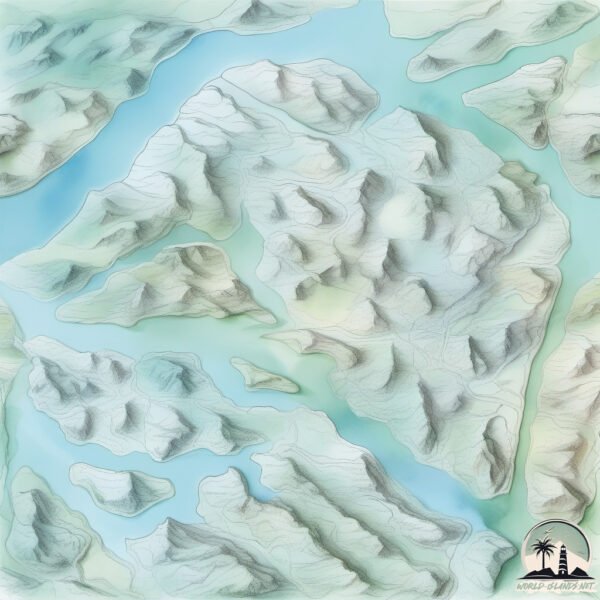Welcome to Angamos , a Polar island in the South Pacific Ocean, part of the majestic Pacific Ocean. This guide offers a comprehensive overview of what makes Angamos unique – from its geography and climate to its population, infrastructure, and beyond. Dive into the details:
Geography and size of Angamos
Size: 452.6 km²Coastline: 285.4 kmOcean: Pacific OceanSea: South Pacific OceanContinent: South America
Angamos is a Large Island spanning 453 km² with a coastline of 285 km.
Archipel: Cordillera Patagónica Insular – A series of islands in the Patagonian region, known for their dramatic landscapes and part of the Andean mountain range.
Tectonic Plate: South America – A major plate covering the South American continent and part of the Atlantic Ocean, known for the Andes mountain range and significant seismic and volcanic activity.
The geographic heart of the island is pinpointed at these coordinates:
Climate and weather of Angamos
Climate Zone: PolarClimate Details: TundraTemperature: Cold
Climate Characteristics: The tundra climate features long, extremely cold winters and short, cool summers. Vegetation is limited to mosses, lichens, and small shrubs due to the low temperatures and short growing seasons. Biodiversity is low, but some specialized species thrive.
Topography and nature of Angamos
Timezone: UTC-04:00Timezone places: America/La_PazMax. Elevation: 960 m Mean Elevation: 355 mVegetation: Evergreen Broadleaf ForestTree Coverage: 40%
The mean elevation is 355 m. The highest elevation on the island reaches approximately 960 meters above sea level. The island is characterized by Mountains: High, steeply elevated landforms. Characterized by both a high maximum elevation (over 500 meters) and a high mean elevation, creating rugged, mountainous terrains on islands.
Dominating Vegetation: Evergreen Broadleaf Forest
Vegetation: 11 vegetation zones – Exceptionally Diverse Island
Infrastructure and Travelling to Angamos
Does the island have a public airport? no .
Does the island have a major port? no .
The mean population of Angamos is 1 per km². Angamos is Uninhabited. The island belongs to Chile .
The name of the island resonates across different cultures and languages. Here is how it is known around the world: Arabic: جزيرة ويلينغتون; German: Wellington; Spanish: Isla Wellington; French: île Wellington; Portuguese: Ilha Wellington; Russian: Веллингтон; Chinese: 惠靈頓島
Continuing your journey, Lavinia is the next notable island, situated merely km away.
Experience the Best of Lima at Open Plaza Angamos: Shop, Dine, and Explore
Open Plaza Angamos in Surquillo has it all—three floors of shopping, dining, and entertainment, plus a movie theater and gym.
Experience the Best of Lima at Open Plaza Angamos: Shop, Dine, and Explore
Open Plaza Angamos in Surquillo has it all—three floors of shopping, ...
Open Plaza Angamos in Surquillo has it all—three floors of shopping, dining, and entertainment, plus a movie theater and gym.
Containerised Bulk Handling Using 3 Mobile Harbour Cranes at Puerto Angamos in Chile
Puerto Angamos use rotating spreaders, RAM Revolver, to unload ...
Puerto Angamos use rotating spreaders, RAM Revolver, to unload minerals with three MHCs. Operating 3 mobile harbour cranes ...
Amazon Expedition Angamos Matses Community.
Filming sunset on the Javary River, bordering Peru and Brazil, in the ...
Filming sunset on the Javary River, bordering Peru and Brazil, in the heart of the Amazon Rain forest. July 2017.
Chile is classified as Emerging region: G20: Group of Twenty – Major economies comprising both developed and emerging countries, representing the world’s largest economies. The level of income is Upper middle income.
News – Latest Updates and Headlines from Angamos
Stay informed with the most recent news and important headlines from Angamos. Here’s a roundup of the latest developments.
Loading...
Please note: The data used here has been primarily extracted from satellite readings. Deviations from exact values may occur, particularly regarding the height of elevations and population density. Land area and coastline measurements refer to average values at mean high tide.

